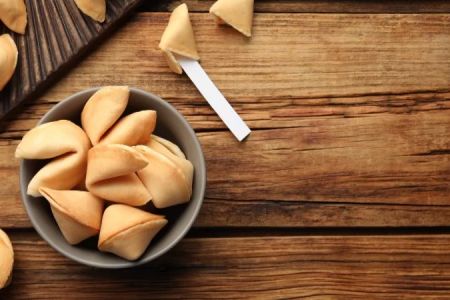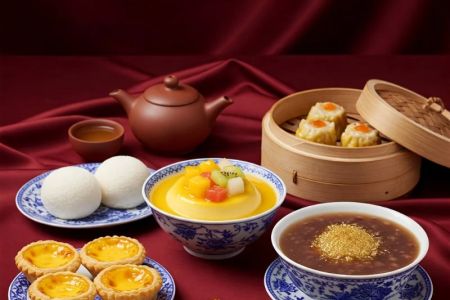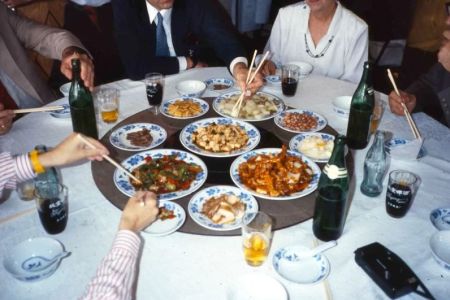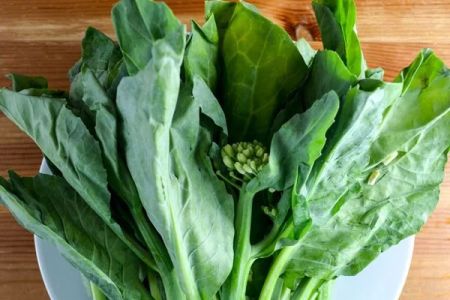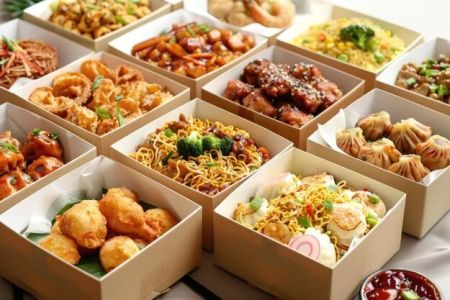Guide to Chinese Chili Peppers: From Mild to Fiery, Understanding Heat Levels
Introduction to Chinese Chili Peppers
Chinese chili peppers are an essential ingredient in Chinese cuisine, adding both flavor and heat to dishes. From the mild, subtly spicy varieties to the intensely fiery options, these peppers contribute depth and complexity to the flavors in a wide range of dishes. Whether you're enjoying Sichuan hotpot, stir-fries, or dipping sauces, understanding the different heat levels of Chinese chili peppers can enhance your culinary experience and allow you to better control the spice levels in your cooking.
The Varieties of Chinese Chili Peppers
Chinese chili peppers come in a variety of shapes, colors, and heat levels. They can range from being mild and fruity to explosively hot. Let’s explore the most common varieties, their heat levels, and how they are used in cooking:
1. Dried Red Chili Peppers (Chili Pepper Pods)
These dried peppers are commonly used in Chinese cuisine, especially in Sichuan and Hunan dishes. When you see dried whole peppers used in stir-fries or as part of a sauce, they're often of this variety. While they are not usually eaten whole, they are used to infuse heat and flavor into the dish. The heat from dried red chili peppers varies significantly depending on the specific variety, but they are often medium-hot, providing a good balance of spice and flavor.
2. Sichuan Peppercorns
Although not technically a chili pepper, Sichuan peppercorns are an essential part of the Chinese chili pepper experience. Known for their unique "numbing" sensation (麻, or "má"), they complement the heat of chili peppers and contribute to the famous "mala" (麻辣) flavor profile of Sichuan cuisine. While they don’t contribute significant heat on their own, their tingling effect makes them a key component in dishes like Kung Pao Chicken and Mapo Tofu.
3. Thai Bird’s Eye Chili
While not originally from China, Thai Bird's Eye chili peppers are often used in Chinese cooking, especially in the southern regions and in fusion dishes. These small, red peppers pack a serious punch, with heat levels often reaching over 50,000 Scoville Heat Units (SHU), making them one of the hottest varieties used in Chinese kitchens. They are often used in sauces and stir-fries where a quick burst of intense heat is needed.
4. Chinese Chili Paste
Chinese chili paste, or chili bean paste (Doubanjiang), is a fermented paste made with chili peppers, broad beans, and salt. It has a complex flavor profile, with a balance of umami and heat. This paste is often used in Sichuan cuisine and is the base for dishes like Mapo Tofu. The heat from chili bean paste can vary, but it is generally considered moderate, making it an excellent ingredient for creating flavorful sauces without overwhelming the dish with heat.
5. Long Red Chili Peppers (Fengwei Chili)
Long red chili peppers, often referred to as Fengwei chili, are typically milder than their smaller counterparts. These peppers add color and a mild heat to dishes, making them perfect for those who prefer less spice but still want the characteristic warmth of chili peppers in their meals. They are commonly used in stir-fries, soups, and stews, where their heat level enhances the overall flavor without dominating the dish.
Understanding the Heat Levels of Chinese Chili Peppers
Chinese chili peppers come in a variety of heat levels, and understanding these can help you control the spice level of your dishes. Heat is measured in Scoville Heat Units (SHU), which quantifies the amount of capsaicin, the compound responsible for the pepper's heat. Here is an overview of how different Chinese chili peppers rank on the Scoville scale:
1. Mild Peppers: 1,000 - 5,000 SHU
Peppers in this range, such as the long red chili and some varieties of dried red peppers, provide a gentle heat. These peppers are suitable for those who enjoy a subtle kick of spice without overwhelming their palate. Mild peppers are often used in cooking for their flavor rather than their heat, and they can be great for those new to spicy foods.
2. Moderate Peppers: 5,000 - 30,000 SHU
The most commonly used Chinese chili peppers, such as Thai Bird’s Eye chilies and some dried red chili peppers, fall into this category. These peppers deliver a noticeable heat that adds complexity to dishes, providing a warm and tingling sensation without being overly intense. If you’re looking for a balanced level of spice, these moderate peppers are perfect for your cooking.
3. Hot Peppers: 30,000 - 50,000 SHU
Sichuan peppercorns, combined with the heat of certain chili pastes or fresh chili peppers, can fall into this range. These peppers create an intense level of heat that’s perfect for those who enjoy fiery foods. The spiciness can be overwhelming for some, so it’s important to use them in moderation and combine them with other ingredients like garlic, ginger, and soy sauce to create a well-rounded flavor.
4. Very Hot Peppers: 50,000 - 100,000 SHU
Some varieties of Sichuan chili peppers and Thai Bird’s Eye chilies can fall into this category. These peppers bring a serious heat, and they should be used sparingly in cooking, especially for those who are not accustomed to extreme spice levels. If you enjoy the fiery kick of a truly spicy dish, these peppers are the right choice for you, but be mindful that they can easily overpower the other flavors in the dish.
Using Chinese Chili Peppers in Cooking
Using Chinese chili peppers in cooking requires an understanding of their flavor profiles and heat levels. Here are some tips on how to incorporate chili peppers into your dishes:
1. Start Small and Adjust to Taste
If you’re not used to spicy foods, start with milder chili peppers and gradually increase the heat level as you become more accustomed to the spice. It’s always easier to add more heat than to try to tone it down once the spice is in the dish!
2. Use Chili Pastes for Depth of Flavor
Chili pastes like Doubanjiang are perfect for adding both heat and umami to your dishes. These pastes can be used as the base for sauces, stir-fries, and marinades, allowing the heat to blend with other flavors like soy sauce, sesame oil, and vinegar for a complex and well-rounded dish.
3. Pair with Cooling Ingredients
If you find dishes too spicy, pair them with ingredients that help balance the heat. Fresh vegetables like cucumbers, dairy-based sides like yogurt, or a touch of honey can soothe the palate and provide relief from intense spice.
Real-Life Example: How Chinese Chili Peppers Transformed My Cooking
I once visited a Sichuan restaurant where the chef created a mouthwatering dish with fiery Sichuan peppercorns and dried red chili peppers. I was initially hesitant about the spice level but decided to try it. The combination of numbing peppercorns and the spicy chili peppers was surprisingly enjoyable. It enhanced the flavors without overwhelming the dish, and since then, I’ve incorporated these peppers into my cooking at home. The key was balancing the heat with other flavors like garlic, ginger, and soy sauce. It’s become one of my favorite ways to cook, and I recommend anyone who enjoys spicy food to try Sichuan cuisine!
Why Chinese Food Recommends Using the Right Chili Peppers
At Chinese Food, we believe that understanding the heat levels of Chinese chili peppers is essential for any home cook looking to create authentic and flavorful dishes. Whether you're making a simple stir-fry or a complex hotpot, choosing the right chili pepper can make all the difference. Visit our site for more tips on cooking with chili peppers and explore our recommended products for enhancing your culinary experience.



